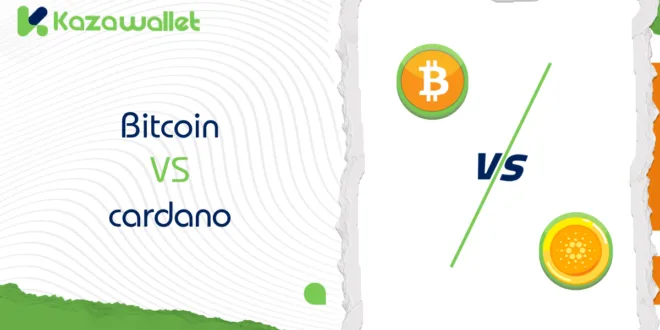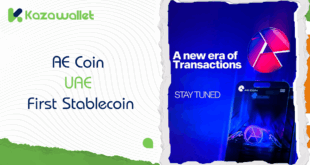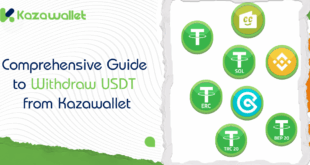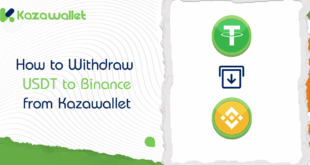While Bitcoin is one of the most widely used cryptocurrencies, there are many others with differing and innovative solutions available in the market.
An example is Cardano, a technological undertaking that aims to provide a scientific and more sustainable alternative for the world of blockchain.
This article discusses Bitcoin vs Cardano, the differences between Bitcoin and Cardano, specifically the primary purpose of each, technology utilized, stability, and risk involved.
What is Bitcoin?

The first decentralized digital currency, Bitcoin, was launched in 2009 by “Satoshi Nakamoto,” a person or group of people.
Bitcoin was designed as a digital currency system that does not involve a central intermediary such as banks or traditional financial institutions. Bitcoin is centered around Blockchain technology, a secure and transparent digital ledger that maintains a record of all the transactions in a permanent and irreversible manner.
The main function of Bitcoin is as a substitute for traditional currencies, with a focus on three main principles: privacy, security, and decentralization. Due to these principles, Bitcoin is mainly utilized as a payment method online or a store of value, considering that it has a limited supply of up to 21 million units.
This limited supply is what makes it like gold in terms of being scarce, which increases its worth in the long term.
It is centered around a process called mining, whereby powerful computers solve mathematical problems that validate the legitimacy of transactions and log them in the blockchain ledger.
As a reward for this, the miners receive new Bitcoins, gradually increasing the supply until the predetermined maximum is reached.
What is Cardano?

Cardano is a highly advanced blockchain platform and cryptocurrency that was launched in 2017 by founder Charles Hoskinson, a key contributor in the development of Ethereum.
Cardano is designed to establish a completely integrated digital space that is capable of supporting decentralized applications (dApps) and smart contracts, with the aim of providing a secure, scalable, and sustainable platform.
Cardano runs on a groundbreaking blockchain technology called Ouroboros, which is the first proof-of-stake (PoS) consensus mechanism. This is more energy efficient than proof-of-work (PoW) systems like Bitcoin, and it is less environmentally detrimental, so it is eco-friendly.
The currency is referred to as ADA and is used on the platform for rewards and transactional purposes. ADA is also the main way in which users vote and engage in platform governance, upholding the decentralization idea.
Cardano is committed to becoming a full-fledged platform for creators and developers, with advanced tools and technologies for building secure and efficient decentralized applications.
With a strong emphasis on security, scalability, and sustainability, Cardano is committed to becoming a leader in financial technology and digital innovation.
Bitcoin vs Tron: Which is Better for Investment?
Bitcoin vs Cardano: A Complete Comparison
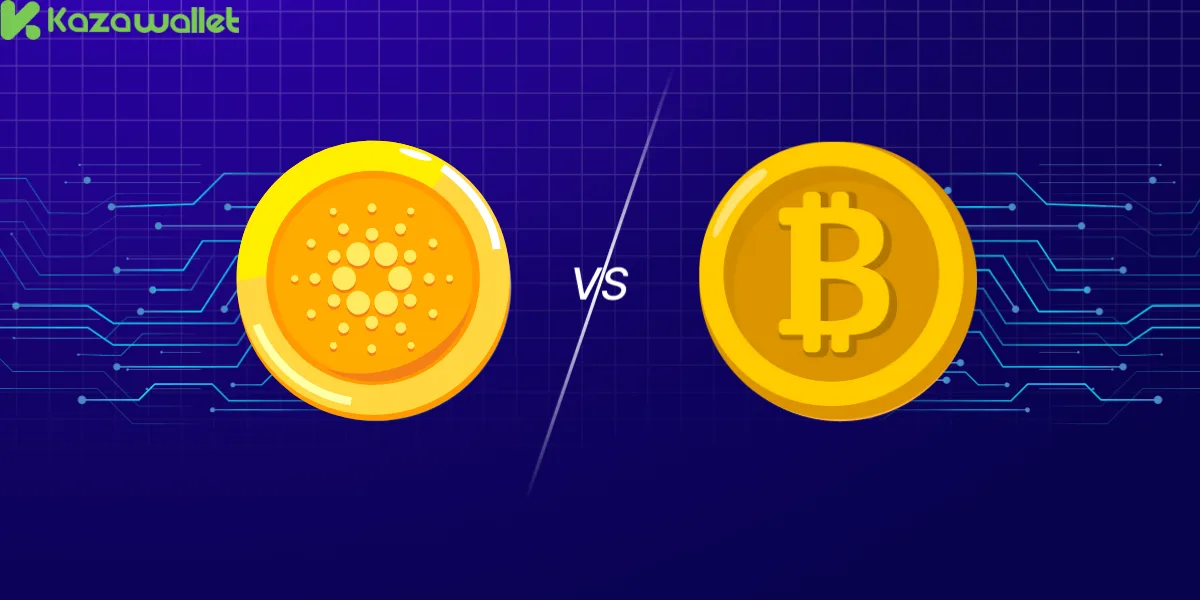
Although both cryptocurrencies utilize blockchain technology, there exist numerous key differences between Bitcoin and Cardano, including primary function, stability, technology, supply, usage, decentralization, and adoption:
Main Purpose
Whereas Bitcoin is a payment platform and store of value in a decentralized context, Cardano is a full platform for developing decentralized applications (dApps) and advanced financial products. Bitcoin is basically the building block from which all cryptocurrencies were made, and Cardano is a third-generation blockchain, aiming to fix what Bitcoin left behind.
Technology
When we talk about Bitcoin vs Cardano, we should mention that Bitcoin relies on a consensus mechanism that is “Proof of Work” (PoW), which entails computationally intensive calculations that must be performed in order to validate transactions. While this mechanism is highly secure, it is extremely energy-intensive, hence environmentally unsustainable.
Cardano, however, is built around a “Proof of Stake” (PoS) algorithm, which is far more energy efficient. The algorithm reduces the need for computationally intensive processes, thereby making Cardano more eco-friendly and sustainable.
Stability
Bitcoin is highly stable owing to the long history and large scale adoption that it has undergone. However, this comes at the cost of flexibility as Bitcoin updates occur infrequently and slowly.
Cardano, being a relatively newer platform, is in the phase of developing and growing, so it is probably less stable than Bitcoin. However, frequent updates in response to scientific studies will make Cardano more adaptive in the future.
Supply and Economics
When we talk about Bitcoin vs Cardano, we should mention that Bitcoin is limited in supply, with a maximum supply of 21 million coins, which makes it scarce and therefore valuable as a store of value. Cardano, on the other hand, is uncapped but is regulated by economic principles that ensure that it is sustainable.
Decentral
Bitcoin is a good illustration of decentralization, as there is no central control, but the centralization of the power of mining in the hands of a limited number of large companies raises doubts about whether it is decentralized.
Cardano follows a community-governance model that allows the community members to participate in decision-making, hence becoming more decentralized in theory.
Adoption and Acceptance
When we talk about Bitcoin vs Cardano, we should mention that Bitcoin is very popular, with numerous companies accepting it as payment and most financial platforms listing it for trade.
Cardano is currently forging alliances and projects with the aim of enhancing adoption. It does have increasing numbers of people using it, but it has limited usage in comparison with Bitcoin.
Bitcoin vs Ripple: Which is Better for Investment?
Bitcoin vs Cardano: Risks Involved
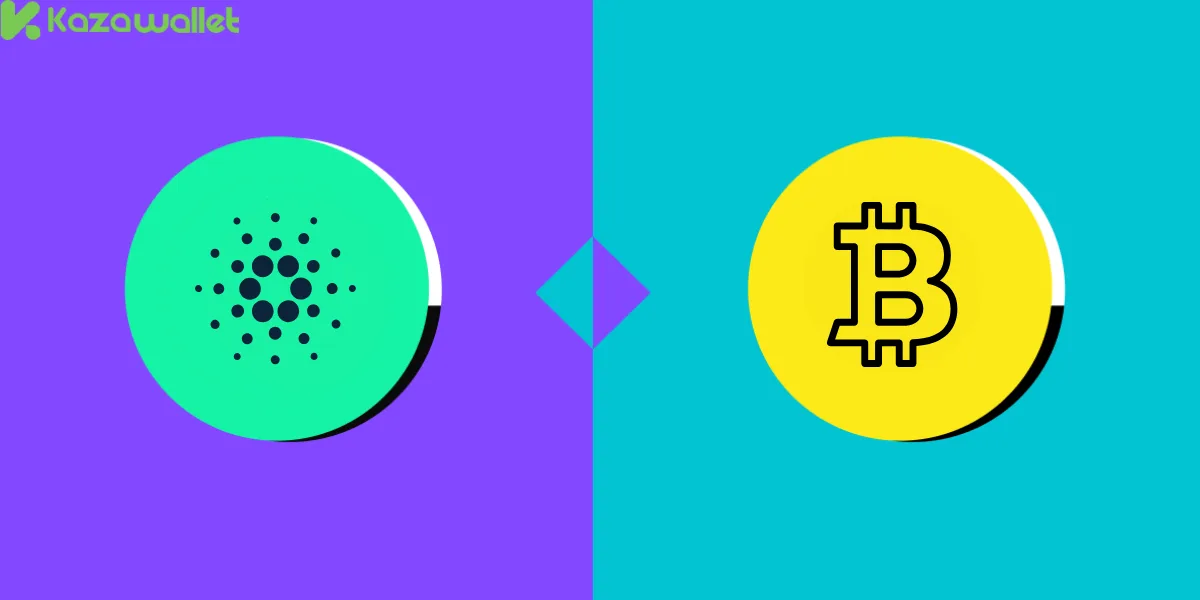
Despite the differences between Bitcoin and Cardano and the advantages offered by both cryptocurrencies, several risks must be considered:
Risks Associated with Bitcoin:
- Price Volatility: Bitcoin experiences sudden price swings, with prices fluctuating wildly in a short period. This is risky for investment, especially for investors with a need for stability or with limited risk tolerance.
- Fraud Risks: The Bitcoin market is susceptible to scams and fraud. Fake platforms can subject the investor to scams by presenting fake interfaces or cloned currencies, incurring massive losses.
- Security Risks: Bitcoin is vulnerable to theft and hackers, especially if digital wallets are not secured. Recovery from loss of a private key or a compromised wallet is nearly impossible. Secure wallets should be highly utilized like Kazawallet.
- Regulatory Environment: Bitcoin is subject to a volatile regulatory environment. Changes in laws or government bans can affect its value and acceptance, making investment uncertain due to varying policies in countries.
- Technical Flaws: Blockchain technology, while advanced, is far from being secure from cyberattacks through vulnerabilities and technical loopholes that can be exploited. These technical vulnerabilities exist in spite of continued efforts towards enhanced security.
- Global Trends: Despite the difficulties, several countries are adopting Bitcoin as a part of their financial planning. Germany, for example, has started accumulating Bitcoin reserves, and countries like the United States and Russia are considering doing the same.
Bitcoin vs USDC: A Comparison of Risks and Stability
Risks Involved with Cardano (ADA):
- Market Volatility: ADA, as with any cryptocurrency, is subject to a price that is affected by many things. This includes project-specific news (new updates or strategic partnerships) through to general cryptocurrency market events (influencer statements or regulatory news) and global economic factors (inflation rates and monetary policy).
- Scalability: While Cardano attempts to address scalability, it is doubtful that it can be successful in this area. The network may be overwhelmed by numerous concurrent transactions, leading to more transaction fees or slower processing times.
- Security: The Proof-of-Stake (PoS) mechanism is more secure and sustainable, but the network is not entirely secure against all threats. Security loopholes in the protocol could expose the network to being hacked or subject the user to the risk of fund loss.
- Competition: Solana, Ethereum, and Bitcoin, among other blockchain platforms and cryptocurrencies, compete with Cardano. Other platforms’ superiority in advanced technology, usability, or market acceptance could lead to a decline in the relative value of ADA against such currencies.
- Regulation: There is insufficient regulatory transparency in most countries for cryptocurrencies like ADA. Regulations and laws could place strict restrictions on ADA use or ban it in certain areas. Inconsistencies in regulatory regimes in different countries could also hinder the global expansion of Cardano and restrict opportunities for expansion.
In the end:
Regardless of bitcoin vs cardano and the differences between Bitcoin and Cardano, the decision must be made with careful thought and with a full understanding of both cryptocurrencies.
Investors must also be cautious about the risks that Bitcoin and Cardano carry, be it market volatility, security, or regulatory updates. Investing in cryptocurrencies must be done with vigilance and caution. Always be careful with these instruments, with a clear plan in accordance with your goals and risk tolerance.
Do not forget that the use of such cryptocurrencies as Bitcoin, Tron, Solana, Binance, and others is made more convenient by kazawallet. It facilitates the purchase, storage, deposit, and withdrawal of such currencies in a hassle-free and secure way, allowing easy trade and transferring between cryptocurrencies.
 Blog Kazawallet
Blog Kazawallet
